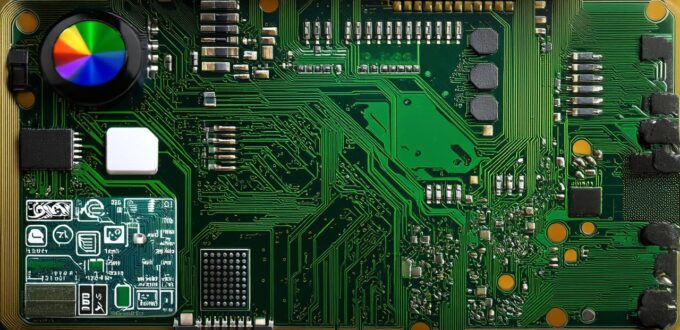Software is an integral part of our daily lives. From the applications we use on our phones to the tools we use in our workplaces, software has become an essential component of modern society. But with so many different types of software available, it can be difficult for developers to understand the primary categories of software and how they relate to each other. In this article, we will explore the main categories of software, their features, and how they are used in various industries.
Operating Systems (OS)
An operating system is a type of software that manages computer hardware and provides common services for computer programs. It is the foundation upon which all other software is built. Operating systems provide the interface between the user and the hardware, making it easier for users to interact with their devices.
Examples of modern operating systems include Windows, macOS, and Linux.
Application Software
Application software is designed to perform specific tasks for end-users. This type of software is typically installed on individual computers or mobile devices and provides functionality such as word processing, graphic design, and web browsing. Examples of application software include Microsoft Office, Adobe Creative Suite, and Google Chrome.
Middleware
Middleware
is a type of software that acts as an intermediary between different systems or applications. It enables communication and data exchange between disparate systems, allowing them to work together seamlessly.
Middleware
can be used in various industries, including finance, healthcare, and manufacturing.
Database Software
Database software is a type of software that stores and manages data. It allows users to access, manipulate, and retrieve information quickly and efficiently. Database software is used in various industries, including finance, healthcare, and manufacturing.
Examples of database software include Oracle Database, MySQL, and Microsoft SQL Server.
Embedded Software
Embedded software is a type of software that is designed to run on specific devices or systems. It is typically found in consumer electronics, such as smartphones, cars, and home appliances. Embedded software controls the device’s hardware and provides functionality such as voice recognition and GPS navigation. Examples of embedded software include Apple’s iOS operating system and Google’s Android operating system.
Cloud Software
Cloud software is a type of software that is hosted on remote servers and accessed through the internet. It allows users to access applications, databases, and other resources without having to install them on their own devices. Cloud software is used in various industries, including finance, healthcare, and manufacturing.
Examples of cloud software include Microsoft Azure, Amazon Web Services, and Google Cloud Platform.
Web Software
Web software is a type of software that runs on the internet and can be accessed through web browsers. It allows users to access information, applications, and other resources from anywhere with an internet connection. Web software is used in various industries, including e-commerce, finance, and healthcare.
Examples of web software include Amazon, Google, and Facebook.
Case Studies: Real-Life Examples of Software Categories in Action
To illustrate how the primary categories of software work together in real-life scenarios, let’s take a look at some case studies.
1. Financial Services
In the financial services industry, different types of software are used to manage various tasks such as risk management, fraud detection, and customer service. For example, an operating system like Windows is used to run software that manages customer data, while middleware like Apache HTTP Server is used to facilitate communication between different systems.
Database software like Oracle Database is used to store and manage financial data, while embedded software like Google’s Chrome is used to provide a secure web browsing experience for customers.
2. Healthcare
In the healthcare industry, different types of software are used to manage tasks such as patient data management, medical imaging, and drug administration. For example, an operating system like macOS is used to run software that manages patient data, while middleware like MySQL is used to facilitate communication between different systems.
Database software like Microsoft SQL Server is used to store and manage medical records, while embedded software like Apple’s iOS operating system is used to provide a secure web browsing experience for healthcare providers.
3. Manufacturing
In the manufacturing industry, different types of software are used to manage tasks such as supply chain management, quality control, and inventory management. For example, an operating system like Linux is used to run software that manages production processes, while middleware like Oracle WebLogic is used to facilitate communication between different systems.
Database software like MySQL is used to store and manage inventory data, while embedded software like Google’s Chrome is used to provide a secure web browsing experience for employees.
FAQs: Answering Common Questions about Software Categories
Here are some frequently asked questions about the primary categories of software:
1. What is the difference between application software and middleware?
Application software is designed to perform specific tasks for end-users, while middleware acts as an intermediary between different systems or applications.
Middleware
enables communication and data exchange between disparate systems, allowing them to work together seamlessly.
2. What is the purpose of operating systems?
Operating systems provide the interface between the user and the hardware, making it easier for users to interact with their devices. They manage computer hardware and provide common services for computer programs, making it possible for multiple applications to run on a single device without interfering with each other.
3. What is the role of embedded software in consumer electronics?

Embedded software controls the device’s hardware and provides functionality such as voice recognition and GPS navigation. It allows devices to work together seamlessly and makes it possible for users to interact with their devices through applications and services.
4. How do cloud software and web software differ?
Cloud software is hosted on remote servers and accessed through the internet, while web software runs on the internet and can be accessed through web browsers. Cloud software allows users to access applications, databases, and other resources without having to install them on their own devices, while web software requires a web browser to access information, applications, and other resources from anywhere with an internet connection.
5. What are some examples of industries that use different types of software?
Different types of software are used in various industries, including finance, healthcare, manufacturing, education, and government. For example, operating systems like Windows and macOS are commonly used in the financial services industry, while middleware like Apache HTTP Server is commonly used in the healthcare industry. Database software like Oracle Database is commonly used in both the financial services and healthcare industries, while embedded software like Google’s Chrome is commonly used in the e-commerce and finance industries. Cloud software like Amazon Web Services is commonly used in all industries, while web software like Facebook is commonly used in the social media industry.
Summary: Understanding the Primary Categories of Software
In conclusion, understanding the primary categories of software is essential for software developers and other professionals who work with technology. Operating systems provide a foundation for all other software, while application software performs specific tasks for end-users.
Middleware
acts as an intermediary between different systems or applications, allowing them to work together seamlessly. Database software stores and manages data, while embedded software provides a secure web browsing experience for users. Cloud software allows users to access applications and services from anywhere with an internet connection, while web software runs on the internet and can be accessed through web browsers. By understanding these different types of software, we can better appreciate how technology works together to support our daily lives.
